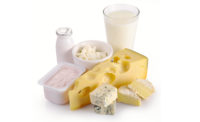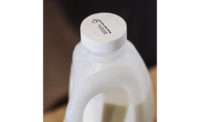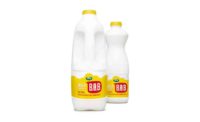Greenlight instrument speeds up ESL milk spoilage testing in Arla Foods’ UK dairy plants

Arla Foods, Canada, continues to set new quality standards by installing a breakthrough technology for measuring potential extended shelf-life (ESL) milk spoilage issues in three of its UK dairies.
That’s why Arla Foods installed MOCON’s GreenLight instrumentation to test ESL milk. GreenLight can provide results at very low bacterial loads in less than 24 hours without in-carton pre-incubation. This compares to 48- to 72-hours required by the traditional, agar-based, standard plate count method.
“It is well documented that counting technologies do not provide information about potential spoilage organisms. GreenLight has met the challenge of providing a product release test that is not only rapid, but also has the sensitivity to detect potential spoilage organisms that might be missed by other techniques,” says Alan Traylor, business manager, microbial detection for MOCON, Inc., Minneapolis.
Arla Foods has been at the forefront of improving delivered quality in the growing ESL segment. GreenLight will be part of a high-technology instrument suite for detecting, identifying and tracking potential sources of spoilage. Uses of the GreenLight instrument will likely expand to include in-process monitoring. The company expects to reduce its overall testing time by 300%, significantly impacting productivity.
“We spent a significant amount of time evaluating new bacterial testing technologies and selected GreenLight due to its performance capabilities and affordability. Arla and MOCON are collaborating to customize GreenLight assays to meet desired objectives,” says Rowena Marshall, quality senior technical manager for Arla Foods.
To conduct the test, the milk sample is poured into a bar-coded APCheck vial, which has a built-in oxygen sensor. Samples can be measured directly or with nutrient media added. Unlike plate counting methods, no serial dilutions are necessary. Typically, GreenLight tests use a much larger sample volume than other methods. This increases sensitivity and the chance of detecting very small bacterial loads in final packaged products.
When the fully automated GreenLight 930-15 is used, the vials can be batch loaded onto the 24-position carousel, or individually loaded at any time during the unit’s “continuous” mode. As bacteria in the test sample multiply and respire, they consume oxygen. The change in oxygen is used to detect the presence of growth organisms. At certain levels, the bacterial load can be enumerated. Bacterial load is calculated in the PC and stored to a secure database.After the test, the sample is in an ideal state for further culture analysis that can be used for organism identification.
The GreenLight technology platform was developed by MOCON’s partner, Luxcel Biosciences, Cork, Ireland.
Looking for a reprint of this article?
From high-res PDFs to custom plaques, order your copy today!





